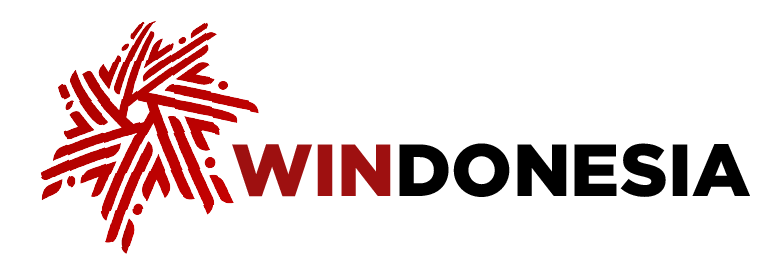Sector
Trading
Indonesia, a developing country rich in natural resources and boasting the 4th largest population in the world, maintains an extensive trade presence. In 2023, the national trade balance reached US$480.7 billion, having grown significantly compared to the pre-pandemic period in 2019, when it stood at US$338.96 billion. Moreover, as of March 2024, the country has officially recorded a trade balance surplus for its 47th consecutive month.
View moreTrading
Indonesia, a developing country rich in natural resources and boasting the 4th largest population in the world, maintains an extensive trade presence. In 2023, the national trade balance reached US$480.7 billion, having grown significantly compared to the pre-pandemic period in 2019, when it stood at US$338.96 billion. Moreover, as of March 2024, the country has officially recorded a trade balance surplus for its 47th consecutive month.
In terms of exports, Indonesia’s top export commodity has historically been mineral-based fuels, especially coal. However, in the global market, Indonesia is a superpower in the exports of vegetable oils, particularly palm oil, having captured roughly 20 percent of the market with a total export value of US$35.2 billion in 2022. Behind that, Indonesia also leads in nickel exports, with a total export value reaching US$5.8 trillion or 14 percent of global exports.
In 2023, China emerged as Indonesia’s top partner for both exports and imports, with a total annual value of US$62.3 billion and US$62.2 billion, respectively. Meanwhile, the nation’s next top export destination is the US, with a total annual value of US$ 23.2 billion, while the next top import country of origin is Japan, with a total annual value of US$ 16.4 billion.
For trades on the level of individual consumers, the main driver of growth has been the rise in e-commerce throughout the past few years. E-commerce gross market value (GMV) grew by 20 percent from US$48 billion in 2021 to US$58 billion in 2022. This growth persisted to 2023, as e-commerce GMV grew by 7 percent to US$62 billion. E-commerce grew rapidly as it provided a means for Indonesian consumers to maintain access to goods and services during the pandemic period of 2020-2022. However, by the time the pandemic ended, e-commerce had grown ubiquitous and became a staple in the day-to-day lives of the average Indonesian.
Meanwhile, the domestic retail sector in Indonesia is driven by the sale of automotives. The retail of automotives alone in the country reached a gross domestic product (GDP) of US$174.35 billion in 2023, contributing to roughly 13.53 percent of Indonesia’s total GDP of US$1.3 trillion for that year at current market prices. Moreover, the country also achieved a per capita GDP of US$ 4,919.
Strong trade growth followed by increasing access to goods has bolstered local consumer confidence in Indonesia despite the period of uncertainty throughout 2023. According to Bank Indonesia’s monthly consumer confidence survey, Indonesians entered 2024 with high confidence, with the confidence index rising from 123.8 in December 2023 to 125.0 in January 2024. Moreover, this increase is even higher compared to same period the previous year, as a consumer confidence index of 123.0 was recorded for January 2023.
Latest News
In a surprising turn of events to cap off the year, Nahdlatul Ulama (NU), Indonesia's largest Muslim organization, has been shaken by turmoil that many observers are calling an internal coup. At the center of the storm is the sudden political ousting of Yahya Cholil Staquf as chairman of NU’s executive body Tanfidziyah.
The catalyst for his removal was Yahya's invitation of Peter Berkowitz, an academic described by critics as having ties to an "international Zionist network", to an internal NU event in August. Yahya, who has a history of engagement with Israel, apologized for the invitation, but it was to no avail.
While Yahya has refused to yield his position, the Syuriah, the organization’s supreme council, moved unilaterally. In an official plenary session held in Jakarta on Dec. 9, the council named senior NU cleric Zulfa Mustofa as the group's acting chairman. The move carried significant political weight, evidenced by the attendance of high-profile government officials and senior NU members: Religious Affairs Minister Nasaruddin Umar, Social Affairs Minister Saifullah Yusuf and East Java Governor Khofifah Indar Parawansa.
At face value, the move against Yahya appears paradoxical. Since his election as chairman of PBNU’s Tanfidziyah in 2021, Yahya has been widely perceived as a staunch ally of the ruling government. Under his leadership, NU has taken pragmatic, some say controversial, steps to align with state policies. Most notably, this included accepting mining concessions under a government scheme allowing mass organizations to manage coal mines.
This concession was formalized through a controversial revision of the Mining Law earlier this year. The law was ratified in just three days without meaningful public or expert consultation, sparking significant backlash. Supporters framed the deal as a path to financial independence for NU, while critics viewed it as a moral compromise that tethered the religious organization too closely to extractive interests and state patronage.
That said, internal power struggles are not new to the current political climate. Late last year, when President Prabowo Subianto was still president-elect, the Indonesian Chamber of Commerce and Industry (Kadin) underwent a similar upheaval. Its then-chairman, Arsjad Rasjid, who had led rival candidate Ganjar Pranowo's campaign, was ousted in favor of the Prabowo-backed Anindya Bakrie. Arsjad initially contested the move as unconstitutional but eventually stepped aside after a compromise was reached.
However, the current NU debacle presents a crucial difference. The Kadin coup was a move against a political rival. Yahya, by contrast, has given no indication of opposing state authority. If Yahya is indeed aligned with the government, why has he become the target of an internal purge?
Observers point towards a proxy war between business factions. One faction within NU is believed to be close to Garibaldi ‘Boy' Thohir, a prominent coal magnate and brother of Youth and Sports Minister Erick Thohir. Another faction is linked to Hashim Djojohadikusumo, a key political financier and Prabowo's brother. Yahya has often been associated with figures close to Hashim, raising the question: why would a faction linked to the President's inner circle allow, or perhaps even orchestrate, his removal?
The contradictions deepen when considering the role of former vice president Ma'ruf Amin. A senior NU cleric, Ma'ruf has long been one of Yahya's most important allies. Yet, Yahya's replacement, Zulfa Mustofa, happens to be Ma'ruf's nephew. Zulfa claims he received his uncle's blessing to assume leadership.
This claim, however, clashes with the former vice president's public stance. Ma'ruf has openly rejected the manner of Zulfa's appointment, declaring Yahya's ousting illegitimate. He argues that under the group's constitution, a change in leadership cannot occur through a mere plenary session; it requires an Extraordinary Muktamar (Congress), reserved for emergency situations.
With NU now effectively split into dual leaderships, and Yahya continuing to assert his legitimacy, the organization is trapped in a stalemate marked by paradoxical power plays. Given the magnitude of the rift, it remains to be seen whether the Prabowo administration will intervene to resolve this quiet coup d'état.

